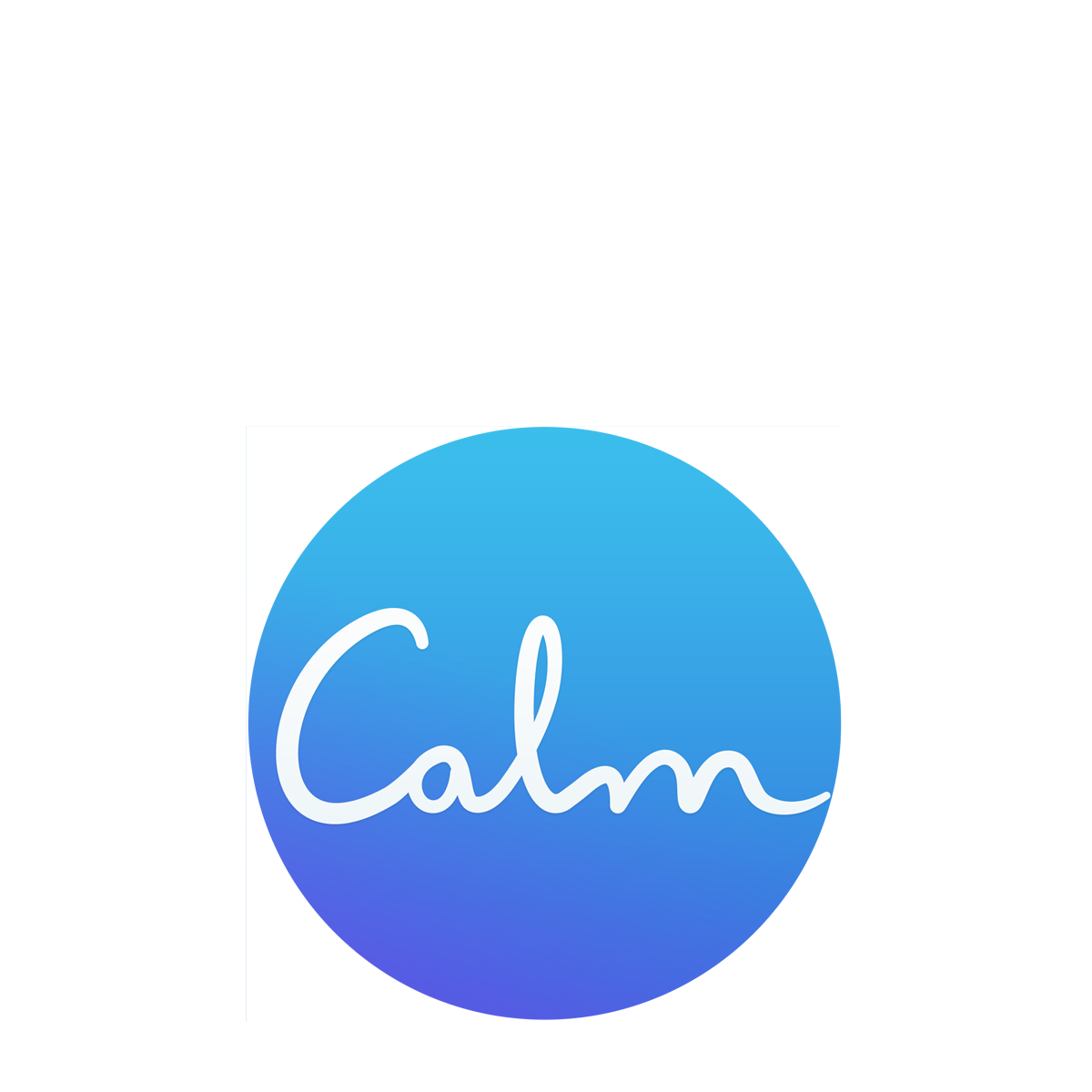The ultimate anxiety toolkit
Credit: Getty Images
The word “anxiety” has a hard job. It’s a single word that works to define a plethora of lived experiences.
For some, it’s in the waiting room of a doctor’s office, where underneath the fluorescent lights, spiraling thoughts can make it hard to breathe. For others, anxiety sits right next to them on the plane and makes flying an experience they dread.
Then there are those who struggle with “any regular Thursday'' anxiety, or generalized anxiety. This reality can be as frustrating, limiting, and tough to understand unless you personally experience it.
According to the National Alliance on Mental Illness, 48 million people in the United States report living with anxiety annually, and it’s more common in women than men. What’s more, through the pandemic, the rates of anxiety and depression have been four times higher than they were in 2019, according to the American Psychological Association.
What is anxiety?
“Anxiety is a feeling of nervousness, fear or worry as an emotional response,” explains Dr. Doreen Marshall, psychologist and vice president of mission engagement at American Foundation for Suicide Prevention (AFSP). “We should remember that not all anxiety is problematic; in fact, anxiety can often be an expected response to a situation [or other stimulus] and can signal to us that we need to protect ourselves, especially when danger is present. We think of anxiety as a clinical concern to be addressed by treatment when it is excessive, persists, is pervasive across situations and disrupts a person’s day-to-day functioning.”
The pervasive, persistent nature and out of proportion response of anxiety is also what helps differentiate it from general stress which can be defined as an appropriate reaction to a situation or trigger. According to the American Psychological Association, removal of the situation or trigger typically removes the feelings of stress and however they may manifest, while the same may not be true for anxiety.
What are symptoms of anxiety?
“Anxiety can feel like an alarm that is randomly going off and it can be hard to identify what triggered it. We are more likely to notice the mental or physical symptoms,” Dr. Adjoa Osei, a therapist at Alma in New York City, said. “With anxiety, these perceived threats can be generalized to situations in which there is no immediate danger, or it can lead to constantly worrying about worst case scenarios.”
Physical symptoms of anxiety can manifest as excessive worrying, sweating, queasy stomach, or heart racing, Osei added. Marshall also noted that for some, anxiety resolves following the event that caused it. However, that’s not always the case.
“For someone who has anxiety that interrupts their functioning, their anxiety likely goes beyond any one situation. They have anxiety about that particular event, but a more generalized feeling of anxiety that persists across situations,” she said. “This can interrupt their functioning by interrupting their sleep, appetite, and social interactions and they may find themselves avoiding life experiences because of it.”
What are some coping strategies for anxiety?
Having an understanding of how anxiety is triggered in your daily routines can also help you find the best coping strategy.
“Getting regular exercise, keeping regular sleep schedules, watching sugar consumption can all help your body in terms of managing waves of anxiety,” explains Marshall. Other strategies she suggested include deep breathing, journaling, and talking with others, including mental health professionals.
Research has shown that using a meditation app can support in diminishing the symptoms of anxiety or depression. One internal study of Calm users found that consistently checking in with their mood following a meditation session did, over time, help minimize anxiety symptoms.
“With meditative practices, we can gain greater awareness of our bodily sensations and learn how to bring our mind and body into a relaxed state,” Osei said. “This union between our mind and body allows us to gain a healthy distance from our aroused physical state and anxiety-provoking thoughts.”
While cultivating a long-term support plan for your anxiety will be helpful, there are also short-term coping mechanisms you can turn to.
Osei suggests:
Counting to four with each inhale and exhale while taking a brief pause between breaths
Focus on tensing and then relaxing different parts of your body, as a way to relax your body
Challenge unhelpful thoughts by asking questions like, “What evidence do I have for or against this thought?” or “What would I tell a friend in a similar situation?”
Medical professionals are also trained to help people struggling with anxiety, particularly those who are facing persistent worries, are feeling frequently on edge, or are having panic attacks or trouble sleeping. Talk therapy and medication have also proven to be helpful for some, according to Mayo Clinic.
—————
While a practice for managing anxiety takes, well, practice, there are immediate spaces within our app or Calm digital universe that can help you feel safe, cope with an immediate stressful situation, and garner enough bandwidth to pour into your longer term solutions.
Tools
Breathe Bubble
You’ve probably seen this graphic float around your Instagram or TikTok. The breathe bubble helps you reset the pace of your breaths by prompting you visually to take a breath in and a breath out. Deep breathing can help reset the nervous system.
“When we are anxious, we might start taking quick, shallow breaths that cause symptoms like lightheadedness, tightness in our chest, and stiff muscles,” explains Osei. “By deepening and slowing our breath, we can increase our air flow into our body and send a signal to our body that it is okay to relax.”
Apple Watch
The voice of Tamara Levitt, Calm’s head of mindfulness, reaches your headphones as soon as you click “Emergency Calm” on your Apple Watch. She speaks directly into the anxiety you may be feeling by saying, “Start by taking a few deep breaths to transition you from where you were a few moments ago to where you are right now…”
In addition to an Emergency Calm, you can also work in “Breathe to Relax” or “Breathe for Calm,” both of which are one minute long.
Calm App Meditations
For General Anxiety
General anxiety disorder is both a specific condition, as well as a general term.
“GAD usually involves a persistent feeling of anxiety or dread that interferes with how you live your life,” explains the National Institute of Mental Health.
The curated list of meditations can help whether you’re dealing with an unexpected anxiety attack or just wanting to build a practice to manage daily anxiety.
7 Days of Calming Anxiety — The intention of this seven-day practice is to have Tamara Levitt guide you as you ride the waves of anxiety.
Panic SOS — Whether you’re in need of a short and sweet four-minute meditation or have time for 10 minutes, you will be met with the calming opposite of the panic you may be feeling.
Investigating Anxiety — As a part of the “Emotion Series,” this meditation will help you work with your anxiety instead of feeling like you’re against it.
Body Scan — Tapping into your five senses can be a helpful way to ground yourself in the middle of an anxiety attack, each body scan practice will help guide you through with compassion.
For Creative Anxiety
Deconstructing Performance Anxiety — This mediation reminds us that sometimes we need to understand why we’re struggling in order to understand how we move through it.
Breaking Habits (Negativity) — Tamara Levitt offers a checklist of helpful tips to work through negative thought patterns or roadblocks that can get in the way of taking your big next step.
Breaking Habits (Procrastination) — Participating in this meditation is the first step to breaking the procrastination cycle and Tamara Levitt offers the next.
For Flight Anxiety
Calming Flight Anxiety — The best place to start for flight anxiety is our eight-part series.
Calm Light — The mostly quiet meditation series can be a helpful companion if you’re overstimulated before or during a flight and just need to feel like someone is holding your hand.
Travel Lessons — We tend to travel with the intention of visiting somewhere new or meeting someone familiar. The anxiety of our flight can sometimes make us forget the end goal, listen in on a conversation between Travel Channel host Kellee Edwards and Steve Goldbloom.
For Grief Anxiety
Emotion Series (Grief) — This meditation allows for a gentle guidance on living alongside grief.
Grieving — In this eight-part series each corner of your grief, whether newly met or ever present, is explored to allow for a sense of release and grounding.
Understanding Grief — First-hand accounts can help normalize what we may be feeling. Listen in on a conversation between producer Steve Goldbloom and Nora McInerny, host of the podcast, “Terrible, Thanks for Asking.”
For Sleep Anxiety
Deep Sleep Release — The durations in this series range from five minutes to 30 minutes, allowing you to find the best sleep release meditation to fit your needs.
Softly Back To Sleep — If your anxiety wakes you up in the middle of the night, we have a meditation for you.
7 Days of Sleep — This sleep series speaks well to anyone who has chronic issues with getting a good night’s rest.
For Physical Pain Anxiety
Untangling Physical Pain — Through your choice of a 15-minute or 30-minute meditation, Shinzen Young has narrated a mediation that will help you better understand how to work with pain and physical discomfort.
Headache and Migraine Release — This four-part series offers insight and tips on pain management.
Radical Self-Care (Listening To Your Body) — While this is a part of a seven-day series, this meditation stands alone as the perfect guidance to tap back into what your body is trying to tell you.
Calm your mind. Change your life.
Mental health is hard. Getting support doesn't have to be. The Calm app puts the tools to feel better in your back pocket, with personalized content to manage stress and anxiety, get better sleep, and feel more present in your life.







